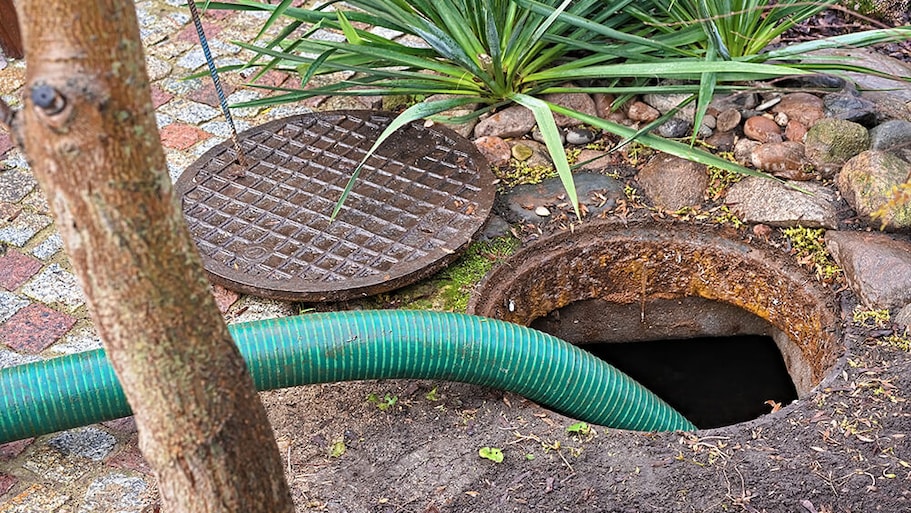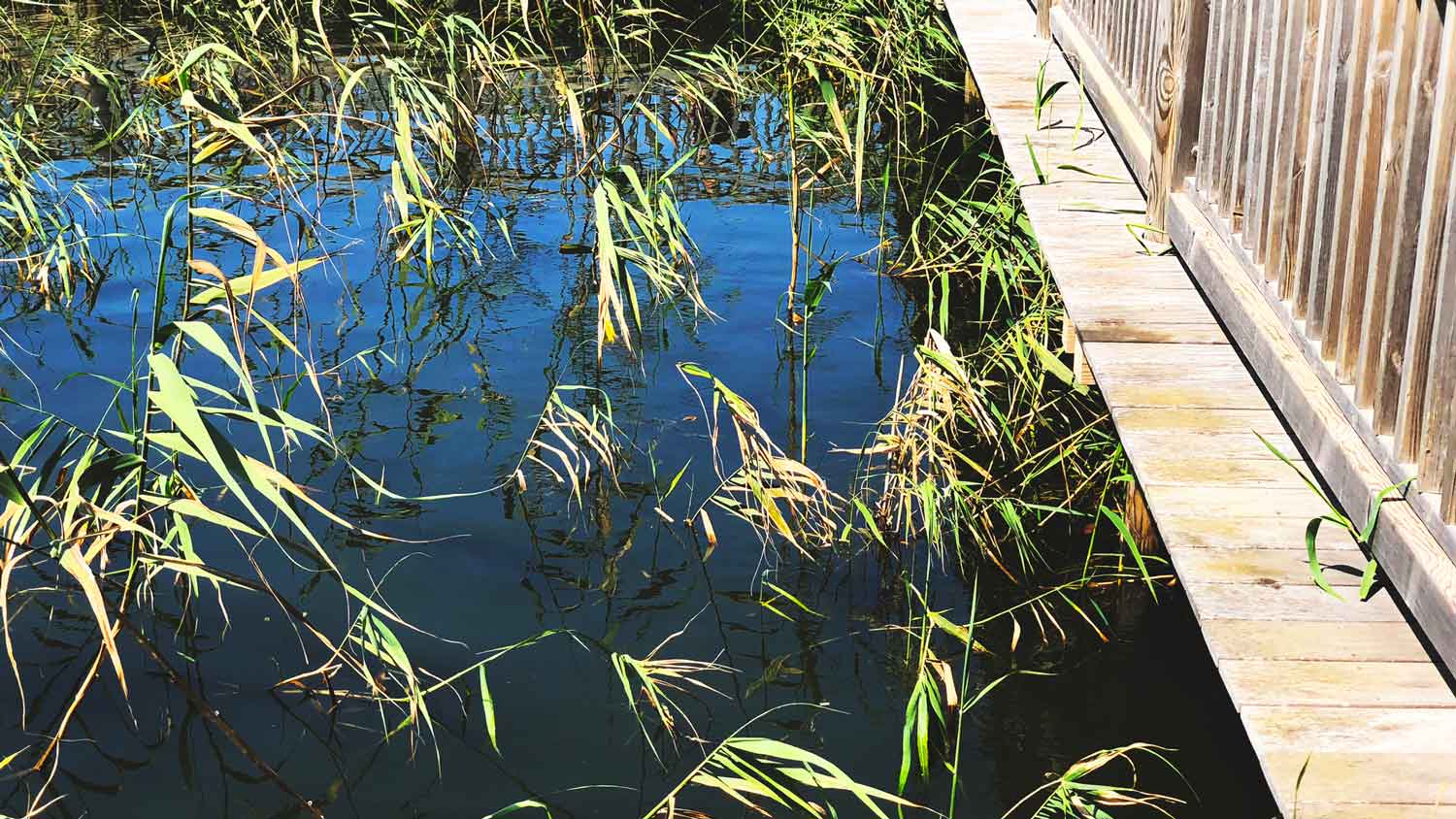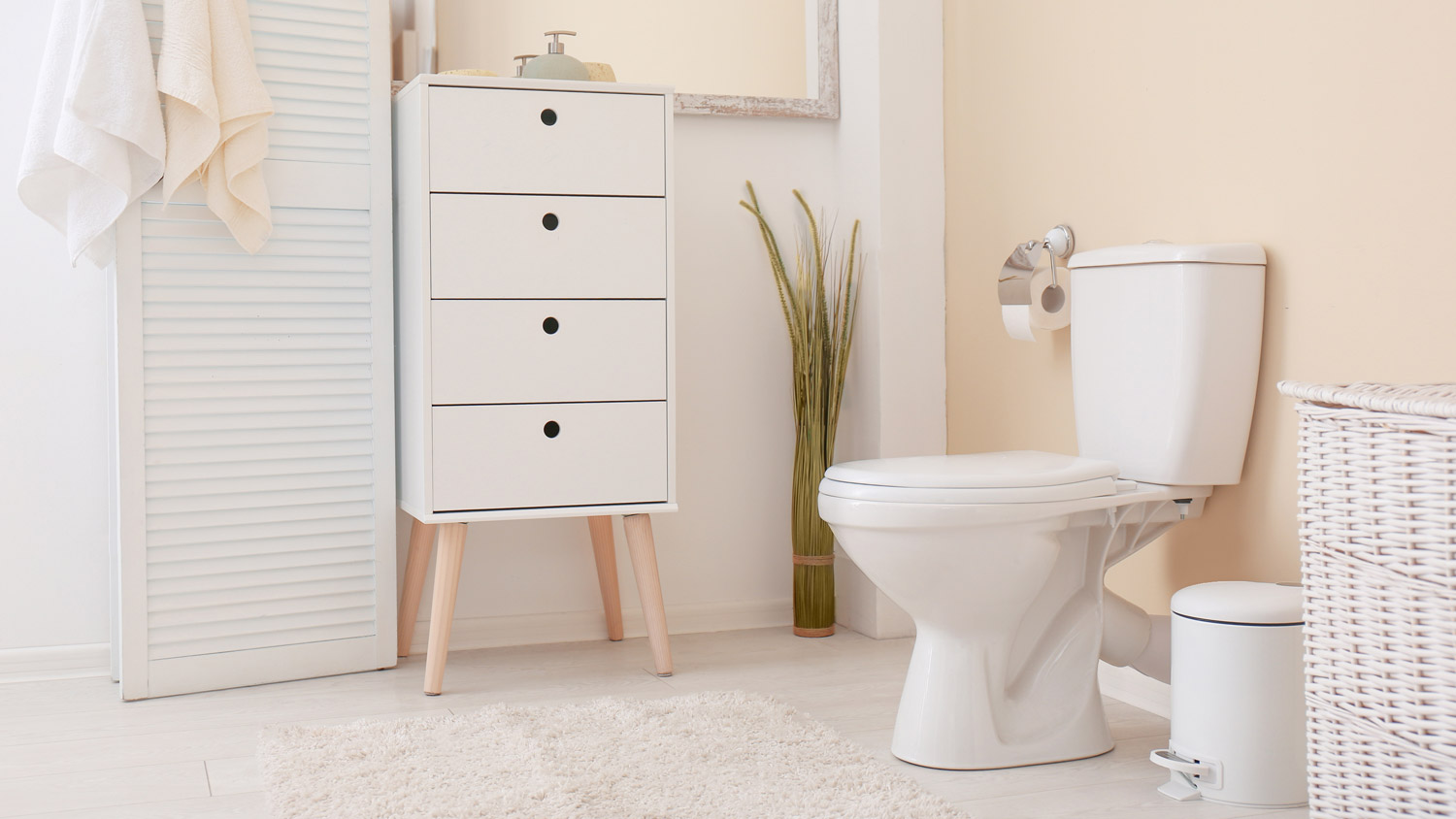
Caring for your septic system is crucial to ensuring its long life. But how much does it cost to pump a septic tank? We explore the different cost factors.
Pump yourself with good information


You may need an alternative system if your lot fails the perc test or you live near an environmentally sensitive area.
Mound systems are the most popular alternative but require lots of space.
Sand filter systems and aerobic treatment systems are great for small properties.
A septic pro should assess your soil conditions and lot to design and construct a well-working system for your specific site.
You may need an alternative septic system if you live near a body of water, a nature preserve, or have soil that’s incompatible with a conventional septic system. Luckily, there are alternatives to septic systems to fit every situation. Learn about alternative septic systems, their cost, maintenance, and when to choose each type.
Alternative septic systems treat wastewater and safely emit it into the natural environment using technology and filters. They cost more than conventional systems and require more maintenance because they have additional electrical components, including alarms, monitors, and pumps.
Septic system alternatives are more complex and need to be designed and installed by an expert. A septic system is not something that a homeowner can install alone. These systems are built for the specific property, soil conditions, depth, and usage levels. A septic tank company ensures that the land, technology, treatment process, and dispersing methods are precise.
Here are the most common alternative septic systems available:
Mound systems
Aerobic treatment systems
Recirculating sand filter systems
Plastic chamber leach fields
Drip distribution systems
Constructed wetland systems
Evapotranspiration Systems
Cluster/community systems
Pressurized dosing systems
Some municipalities and states require that any alternative septic system must be certified. Your local municipality might require you to have a service contract with an approved vendor, as maintenance is essential for the proper function and safety of the surrounding areas.
You may need to consider an alternative type of septic system for any of the following reasons:
Your property doesn't pass a perc test, meaning the soil's absorption rate isn't compatible with a conventional septic system.
You live near a nature preserve or sensitive natural environment that could be contaminated by a traditional septic tank.
You live near a body of water that is sensitive to water pollution.
Your soil has bedrock that's too close to the surface, making it impossible to dig a septic system.
Your soil is too dense and has a high clay content.
The water table is too high.
Mound systems use a series of small distribution pipes in a gravel layer on top of a sand layer. Topsoil covers the system, creating the signature mound on top. An observation tube and access riser stick out of the ground. Mound systems have a dosing (or pump) chamber and a septic tank. The chamber collects wastewater, separating the effluent from the sludge. The effluent then flows to the mound in prescribed doses. After treatment occurs, it disperses water into the soil after going through a sand filter.
A mound system runs like a conventional system but with a leach field raised above grade. An alarm system alerts you or your maintenance company if the pump fails or the water rises too high.
Mound systems cost $10,000 to $20,000, depending on the design, cost of materials, and the condition of the area. They require ongoing maintenance and monitoring to keep it in good shape. Mound systems last 20 to 40 years when well-maintained.
| Pros | Cons |
|---|---|
| Best for rural areas | Not ideal for suburban or city homes |
| Lasts up to 40 years | Requires ongoing maintenance and monitoring |
Best for: Large areas with dense soil or a high water table
An aerobic treatment system incorporates oxygen into the treatment tank with an air pump, helping the natural bacteria activity (they need oxygen to thrive) and adding nutrients to the wastewater.
An aerobic system uses a multi-chamber underground concrete tank, often with up to four chambers, to treat the effluent. The chambers collect, aerate, purify, and pump the effluent. Some aerobic systems have pretreatment and final treatment tanks to disinfect the water as well.
This alternative septic system discharges the wastewater into a small drain field or sprays it in a rural setting. Due to their thorough process, aerobic systems can produce higher-quality wastewater than other systems.
Aerobic treatment systems cost $10,000 to $20,000 and are primarily used when the property requires high-quality treatment, has poor soil conditions, or is near sensitive bodies of water. They work well for homes with smaller lots because they don’t take up a ton of room. Aerobic treatment systems can last up to 40 years.
| Pros | Cons |
|---|---|
| Produces higher-quality wastewater | Not ideal for large properties |
| Don’t take up much space | Not ideal in good soil conditions |
Best for: Small or large lots with poor soil conditions or near bodies of water
A recirculating sand filter system is a large PVC-lined or concrete box filled with sand that's two to four feet deep. The effluent moves from the septic tank to a pump chamber. The pump pushes the effluent through the top layer of sand, where the system filters and treats the wastewater before it deposits into the drain field.
The system can be above grade or partially or fully underground, utilizing a pump and controls or gravity to evenly dose the effluent into the drain field. The sand filter incorporates oxygen into its system to further filter out toxins.
A recirculating sand filter system costs $7,000 to $18,000 due to the pump tank, materials, excavation, and installation. Like other septic system alternatives, sand filters must be well-designed, constructed, and maintained. Sand filters work well on properties with shallow soil, high water tables, near bodies of water, and environmentally sensitive areas.
| Pros | Cons |
|---|---|
| Can be above grade | Can be more expensive |
| Can last 20–40 years | Filters need regular replacing |
Best for: Small or large lots with shallow soil, high water tables, and near environmentally sensitive areas
A plastic chamber leach field operates like a conventional septic system of connected chambers but with a somewhat different leach field—half-pipe plastic chambers replace gravel to offer a void for effluent flow. The effluent comes in contact with microbes on or near the soil, treating the water and allowing it to flow into the earth.
Plastic chamber systems work well on small lots due to a small drain field size. They also work well on properties with high or variable groundwater tables or places where the volume of influent changes (such as at a seasonal inn or cottage).
Chamber systems cost between $5,000 and $12,000, making them one of the more affordable alternative septic systems to construct.
| Pros | Cons |
|---|---|
| More affordable than other options | Shorter lifespan of 20–25 years |
| Has small drain field size | Not ideal for large lots |
Best for: Small or large areas with high or variable water tables or where the volume of influent fluctuates
A drip distribution system pumps effluent through a filtering device to shallow drip tubes that disperse the treated water over a large area. The effluent moves from the septic tank to the rising tank. The distribution irrigates the leach field in a controlled, timed manner through an array of tubes. The system involves a pretreatment unit to deliver disinfected water to the system. The system removes the nitrogen from the wastewater, making the water healthy enough for lawns or non-edible plants.
Drip distribution irrigation systems cost $8,000 to $18,000, partly due to the cost of the large dose tanks. They also require extra monitoring and maintenance due to the technology they use. Because it needs electricity, power outages can interfere and cause a need for more maintenance. Drip distribution systems last 15 years on average but can last up to 40 years with exceptional maintenance.
| Pros | Cons |
|---|---|
| No large mound of soil is needed | Expensive installation |
| Conserves water | Only last 15 years on average |
Best for: Properties with shallow soils, clay soil, and steep slopes, but not those in colder climates

A constructed wetland system uses a septic tank and a shallow manufactured pond lined with rock and tire pieces. The wastewater travels from the septic tank and is distributed through a perforated pipe where the aquatic plants, bacteria, gravel, and other microorganisms break down the pathogens. A pipe at the back of the wetland collects the treated water and moves it into a drain field to release it into the soil.
The size and design of a wetland system vary, but the system works well with almost all types of soil. Constructed wetland systems cost $5,000 to $12,000. Maintenance includes planting, trimming, and weeding the wetlands area. Constructed wetland systems can last for 20 to 40 years.
| Pros | Cons |
|---|---|
| Works well in all soil | Requires landscaping maintenance |
| Lasts up to 40 years | Unpleasant odors are common |
Best for: Large lots or rural areas with poor soil conditions
Evapotranspiration systems feature a waterproof open-air tank where the wastewater slowly evaporates into the air. Unlike other alternative septic systems, the wastewater never reaches the ground and groundwater.
Evapotranspiration systems cost $10,000 to $15,000. They require a warm, dry climate and lots of sunlight and are only used under specific conditions. Too much snow, humidity, or rain can cause a system failure. Maintenance is relatively more accessible and cheaper than other septic system alternatives. Evapotranspiration systems can last 15 to 40 years.
| Pros | Cons |
|---|---|
| Less costly to install | Fails in heavy snow, rain, and high humidity |
| Wastewater never reaches groundwater | Short lifespan |
Best for: Warm, dry climates
A cluster system, also called a community system, collects wastewater from two or more dwellings. Each building has its own septic tank, and then the cluster system treats the collective wastewater and disperses it into the drain field. Community or cluster systems are often co-owned and maintained. They are popular in rural subdivisions and small neighborhood communities.
The cost of cluster or community septic systems depends largely on the geographic location, number of dwellings, and the drain field size. Cluster systems can last for up to 20 to 40 years.
| Pros | Cons |
|---|---|
| Good in small, rural subdivisions | Won’t work for isolated homes |
| Can last up to 40 years | Requires all neighbors to cooperate |
Best for: Two or more homes in close proximity
A pressurized dosing system uses a holding tank and pumps the effluent through piping in even and controlled doses. It improves the performance of the leach field and is often used to rehabilitate a leach field after a septic system failure. Pressurized dosing can be used with a range of alternative septic systems, including mound systems, sand filters, plastic chambers, and drip irrigation.
| Pros | Cons |
|---|---|
| Works well with other systems | Relies on electricity |
| Helps leach fields | High-maintenance |
Best for: Use in conjunction with mound systems, sand filters, plastic chambers, and drip irrigation systems
All types of alternative septic systems require careful design, planning, and construction. They are not a one-size-fits-all solution.
When choosing an alternative septic system, you should consider:
Type of soil and soil quality
Nearby natural habitats and bodies of water
Topography of property
Lot size
Climate
Budget
Level of maintenance required
As a homeowner, it’s difficult to assess your property and decide on a type of alternative septic system. It’s best to work with a local septic tank company to help determine your property's best alternative septic system. An improper design or construction can be an expensive, inconvenient problem later on.
According to data from Angi customers, 29% of homeowners don’t know if they need a permit for their septic tank installation. A total of 49% of homeowners surveyed do need a permit for their upcoming installation project. Not sure where you stand? A septic tank pro can give you all the information you need before your installation starts.
They showed up right on time and did a great job. I can’t believe the difference new gutters make on how the house looks! Would recommend to anyone looking for gutter work!
His customer service was beyond impeccable he?s amazing , he was very patient, quick , and he answer any questions I had & what do moving forward 5 stars for me would definitely recommend!
I hired this company they done a brilliant job at a good price see you guys next spring
Very simple and straight forward folks to work with. Gary was very prompt in replying and string up the work.
The moving crew knew their stuff and showed up with top notch packing materials tailored to each piece of furniture. They took apart the bedframe like pros and wrapped it up tight making sure it did not get scratched while on the move. For delicate stuff like the glass dining table they gave...
Father and sons, Mike, Mike Jr., and Dan, turned the unfinished basement of our 110 year old house into a completely finished basement. I am extremely skeptical that a better crew can found. On every dimension, they far exceeded our expectations. They worked closely with us to make sure...
Very knowledgeable efficient and clean install.
I would definitely turn again to MAG Development. Ernest was immediately responsive, communicated effectively, and quick to execute the work. When minor hiccups arose, he responded immediately and professionally. The quality of the work was high, transforming and upgrading the space within...
He's very professional, he knows his stuff technically, but he made a major error and refused to do anything about it, he did nothing, he blew me off, he designed a system exactly i asked him not to do, i since i didn't know anything about septic system, i went along with it until i saw this...
I am not an expert in septic system design. Therefore, I hired a highly respected septic system designer as my advocate and to do the site analysis and design for its installation. Dick Sweet seemed to be very knowledgable and helpful. However, there seem to be two primary concerns in...
From average costs to expert advice, get all the answers you need to get your job done.

Caring for your septic system is crucial to ensuring its long life. But how much does it cost to pump a septic tank? We explore the different cost factors.

Concrete is one of the longest-lasting septic tank materials. Find out concrete septic tank prices for your wastewater management project.

How much does a septic system cost in Philadelphia? Explore types of septic systems, add-ons, site prep, and how you can save money on septic system installation.

Need to know what sewer line replacement costs in Dallas, TX? This guide will help you prepare to budget for sewer line replacement done by local contractors.

Got a home construction project coming up? Here’s how to find your sewer line from house to street so you can avoid catastrophe.

Want to learn how to build a septic tank for your rural or off-grid property? First, check your local laws, then dive into these general guidelines.